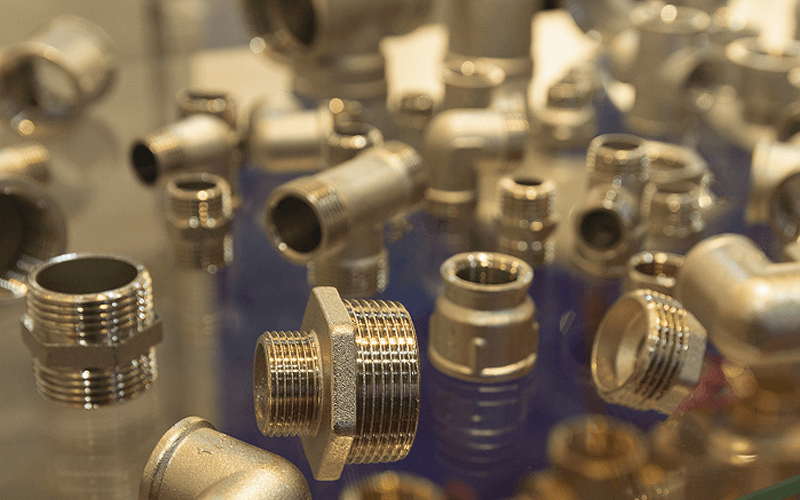Brass machined parts: Excellent parts in CNC machining
Application of brass machined parts
Brass machined parts are one of the most common metal parts in our lives. In this article, we will discuss the application, machinability, surface finish and brass machined parts tips of brass.
1.Characteristics of brass machined parts
- Brass has strong wear resistance
- High strength, high hardness and strong chemical resistance (special brass)
- Easy to process
- Low cost.
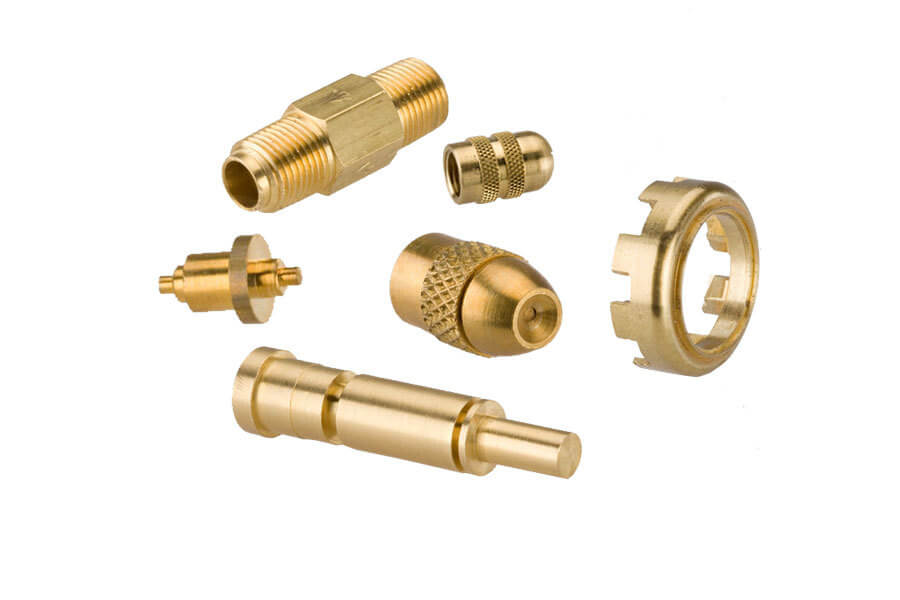
2.Types and applications of brass machined parts
1) Conventional brass uses
Ordinary brass has a wide range of uses, such as water tank belts, water supply and drainage pipes, medals, bellows, serpentine pipes, condensers, bullet shells and various complex stamping products, small hardware parts, etc.
As the zinc content increases from H63 to H59, it can withstand hot processing well and is mostly used in various mechanical and electrical parts, stamping parts, musical instruments, etc.
2) Uses of H65 brass
H65 brass has sufficient mechanical properties and process properties, good cold and hot pressing properties, golden color, and is mostly used in various hardware products, lighting, pipe fittings, zippers, decorative plates, rivets, springs, sedimentation filters, etc.
3) Uses of H68 brass
It has good plasticity and high strength, good cutting processability, easy welding, corrosion resistance, and good cold and hot processability. It is generally used for various cold-drawn and deep-drawn parts, radiator shells, bellows, waveguides, doors, lamps, etc.
4) Uses of H70 brass
It can be used for various deep-drawn and bent stress-bearing parts, such as radiator shells, air ducts, bellows, bullet shells, gaskets, etc. It has good mechanical properties, good hot plasticity, acceptable cold plasticity, good cutting processability, easy fiber welding and welding, and corrosion resistance. It is a widely used brass variety.
5) Uses of nickel brass
The tensile strength of nickel brass alloy in soft state is 400MPa, and the elongation is 65%. It can be processed into tubes, plates, strips and wires by cold and hot pressure, and has good machinability and weldability. It is used to manufacture metal coins, pressure gauge tubes, paper nets, marine condenser tubes and other corrosion-resistant and pressure-resistant pipes.
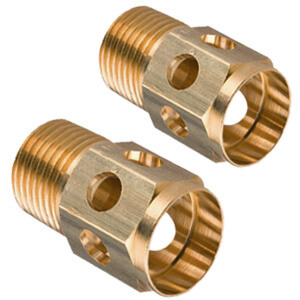
6) Application of lead brass
Lead brass is an extremely important and most widely used complex brass with excellent cutting performance, wear resistance and high strength. It is mainly used for various connectors, valves, valve stem bearings maintenance in mechanical engineering, hot forging valve blanks, lock industry, and watch industry are three important markets.
The low cost of lead brass is an important prerequisite for its widespread application. Its alloy composition can contain a variety of alloy elements, and the content requirements are relatively loose, which lays the foundation for the comprehensive utilization of copper alloy raw materials.
7) Uses of HPb59-3 lead brass
HPb59-3 lead brass has good hot and cold processing performance and excellent mechanical processing performance. It is usually used to make various pins, screws, washers, hardware, pipe fittings, bearing cages, etc.
8) Uses of H59-1 lead brass
It is a widely used lead brass, which is characterized by good cutting processability, good mechanical properties, resistance to cold and hot pressure processing, easy welding, good fiber welding, good general corrosion stability, but has a tendency to corrosion cracking. It is mainly used for air conditioning valves, hardware machinery, etc.
9) Uses of manganese brass
Manganese brass has excellent strength and hot and cold processing performance. It is widely used in ships and marine engineering. It can also be used as a wear-resistant material for high-pressure pump friction pairs and automobile synchronous gear rings.
10) Uses of HMn58-2 manganese brass
HMn58-2 manganese brass has high corrosion resistance in seawater, superheated steam and chlorides, but has a tendency to corrode and crack; it has good mechanical properties, low thermal conductivity and electrical conductivity, is easy to be press-processed in hot and cold states, and has fair press processability. It is a widely used brass variety. HMn58-2 manganese brass is used for important parts working under corrosive conditions and industrial parts with small currents.
11) Uses of HAl60-1-1 aluminum brass
HA160-0-1 aluminum brass has high grinding strength and good corrosion resistance in the atmosphere, fresh water and seawater, but is sensitive to corrosion cracking and has good press processability under hot conditions. It has low plasticity under cold conditions. HA160-0-1 aluminum brass is used for structural parts that require corrosion resistance, such as gears, worm gears, bushings, shafts, etc.
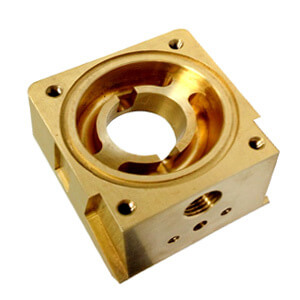
12) Uses of tin brass
Tin brass generally has high strength and hardness. Its biggest feature is its excellent seawater corrosion resistance. Therefore, it is widely used in the marine industry. It can be used to make terminals, instrument clamps, spring washers, spring bushings for vehicles, high-strength corrosion-resistant capacitors for ships and thermal power plants, welding rods and parts for marine structures, etc.
13) Uses of silicon brass
Silicon brass has good mechanical properties, high corrosion resistance, no tendency to corrosion and cracking, and is wear-resistant. It has good pressure processing properties under cold and hot conditions, is easy to weld and braze, and has good cutting properties. The thermal conductivity is the lowest among brasses. It is mainly used for ship parts, steam pipes and water pipe fittings.
14) Uses of iron brass
Iron brass has high strength, toughness and good friction reduction properties. It has high corrosion resistance in the atmosphere and seawater, but has a tendency to corrode and crack. It has good plasticity under hot conditions. Iron brass is used to manufacture structural parts that work under friction and seawater corrosion conditions.
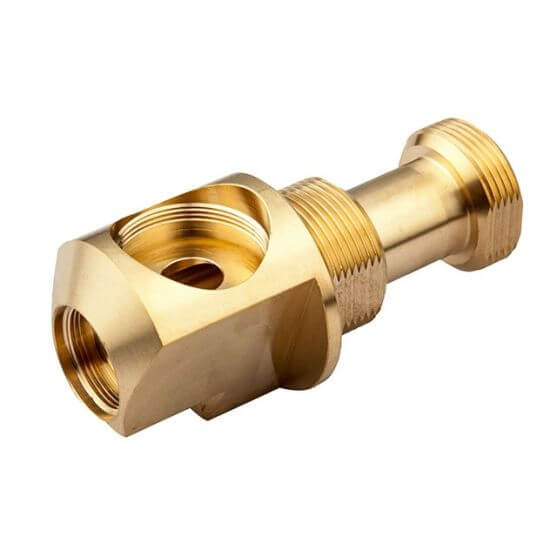
3.Frequently Asked Questions about Surface Treatment of Brass Machined Parts
1) What surface treatment can be used for brass machined parts?
- Can brass machined parts be anodized?
Anodizing is the process of forming an oxide film under chemical action. Since copper and brass cannot be anodized effectively, only copper-aluminum alloys can be done at present.
- Can brass machined parts be powder coated?
Powder coating is actually the process of applying a dry coating to the surface of a metal. Generally, several ingredients are mixed together and then ground into fine particles. So brass can be made into powder.
- Can brass machined parts be polished?
Grinding or abrasive processing is the process of using a grinding wheel to remove uneven parts of the metal surface. This allows polishing.
- Can brass machined parts be chrome plated?
Due to the need to improve the decorative effect of brass, improve durability and higher impact and corrosion resistance, brass can be electroplated. The most common is chrome plating and nickel plating on CNC brass parts.
When choosing a surface treatment, we need to understand the characteristics of the material so that we can choose the appropriate surface treatment according to the application scenario.
2) Brass machined parts skills
Using the right tools, equipment, parameters and conditions can improve the efficiency of high-speed brass machined parts cutting.
- Programming is another important aspect of brass cutting. Use the correct G code to set the spindle speed and operation according to your needs.
- Spindle bushings can be used in your machine shop to protect equipment, workpieces and operators. It can also reduce clearance to suppress vibration and eliminate rod swing to help speed up processing and ensure the quality of brass turning and milling parts.
- Using carbide tools or tools equipped with carbide inserts will increase material removal rates, extend tool life, and enable milling cutters to operate at higher speeds.
